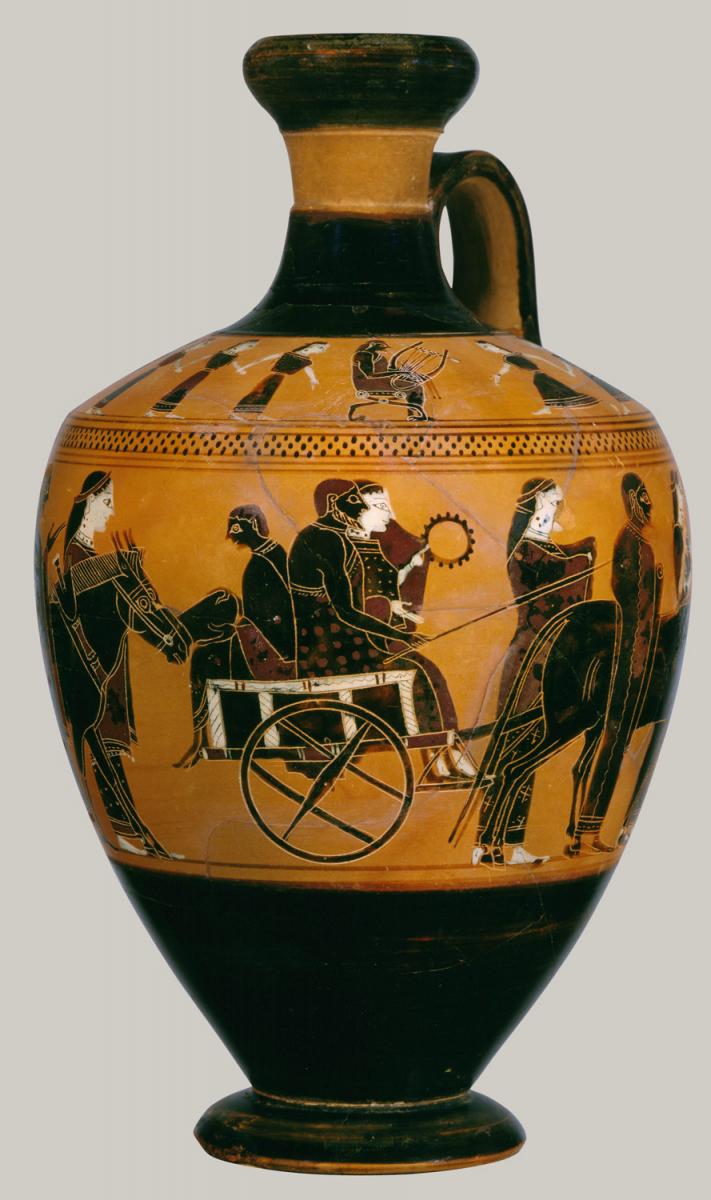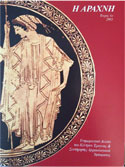FEBRUARY'S WORD: GAMELION

We are in the middle of the attic month Gameliōn, Γαμηλιών. The term derives, of course, from gamēlio sand this in turn from gamos, wedding. Extremely old social institution for which we cannot trace the original roots; there is no law founding it, although they all mention it, its conditions, the impedments, the results. The term comes from the act. γαμέ-ω, “to take a woman as bride, to marry her”, pass. “to take a man, to marry him”. There is no known and accepted etymology, nor a common term in old Indoeuropean.
The important moments in a Greek wedding were two: the first one, ἐγγύη, was the promise of marriage in front of witnesses and the agreement on the gifts ἔδνα, φερνή, προίξ. The second one, ἔκδοσις, was the transfer of the bride from the person having the κυριεία, the powerover her, her κύριoς, her master, usually her father, to the groom, γαμβρός, on the day of the ceremony. The wedding is often symbolized by poets, usually tragic ones with the terms εὐνὴor λέκτρον, “bed”that is depicted in iconography decorated with rich textiles.
During the wedding ceremony, women often wore a himation covering their head over their chiton; see the scene of the Amasis painter on a lekythos in the MET, New York, depicting two young couples on their way to or returning from their wedding ceremony, dated 550-530 BC.
Verb ἕννυμι,εἵνυμι< * ϝεσ-νυ-μι,“to dress”. The common Indoeuropean root *w-es, maybe a developed form of lat. ind-uo, ex-uo, “to dress, to undress”. There are many composita (i.e. ἀμφιέννυμι, ἀμφίεσις, to dress, dress) and derivatives, among which εἷ-μα < *wes-mn̥, usually in plural τα εἵματα, “garments”. From this derives the term τὸ εἱμάτιον/ ἱμάτιον and further terms ἱματίδιον (small himation), ἱματιοθήκη (wardrobe), ἱματισμός (clothing) etc.


